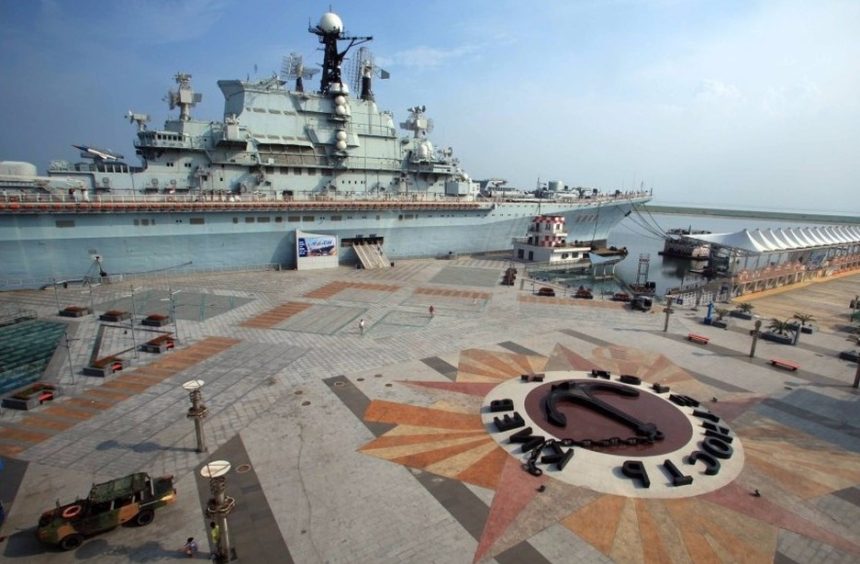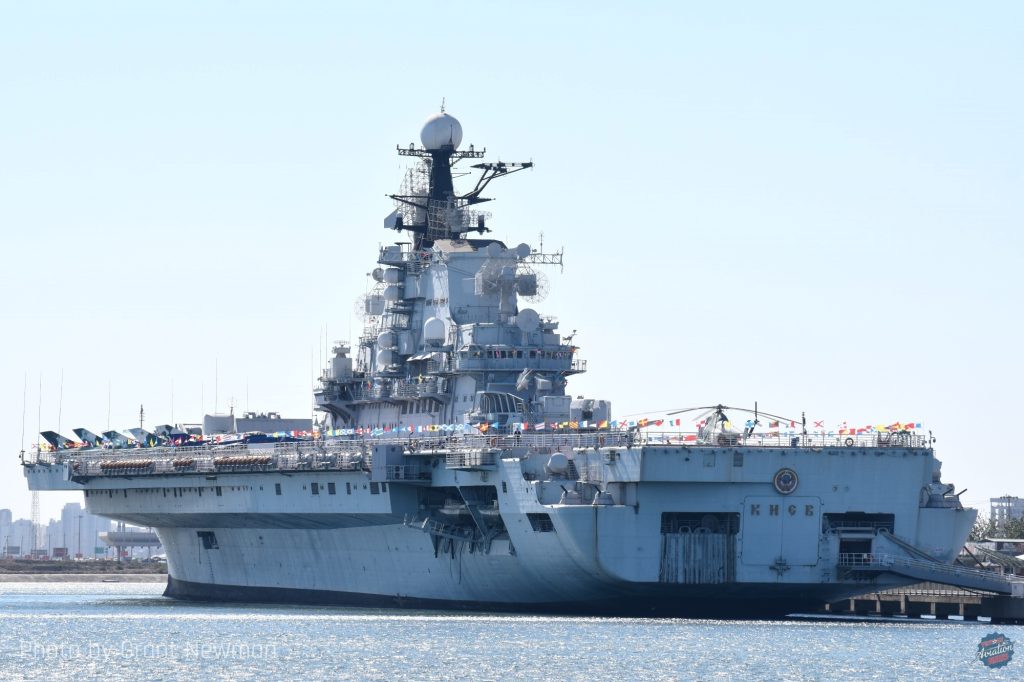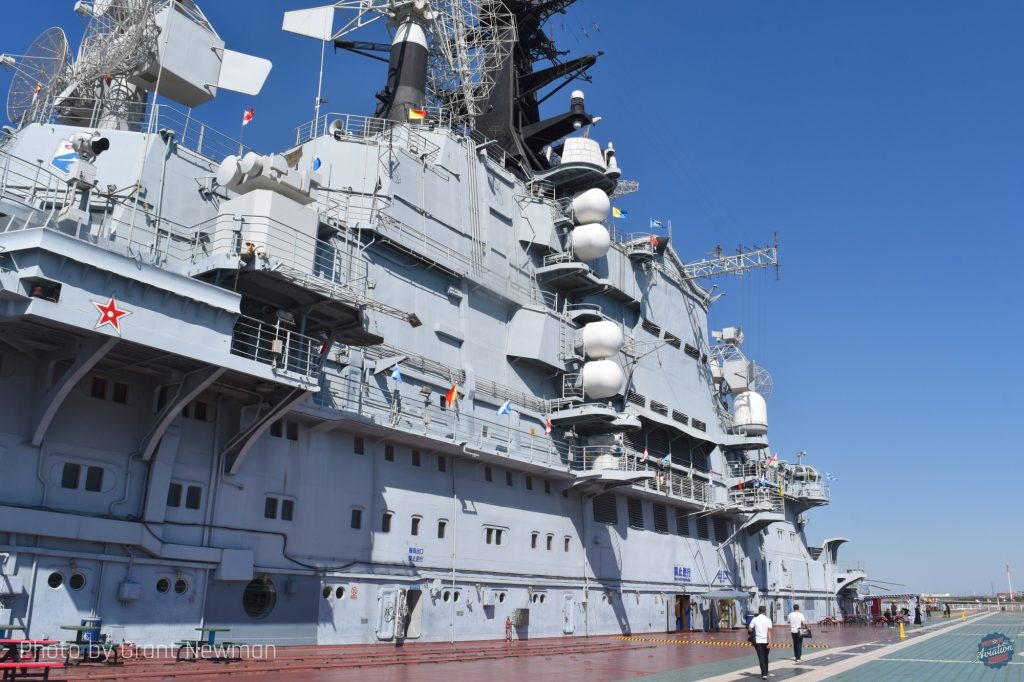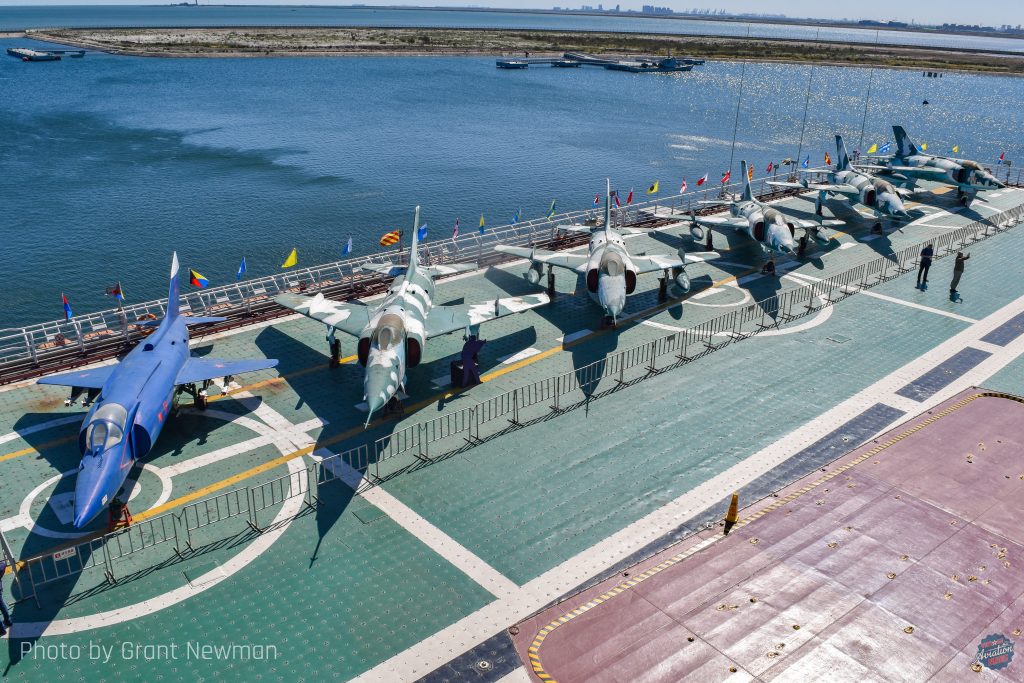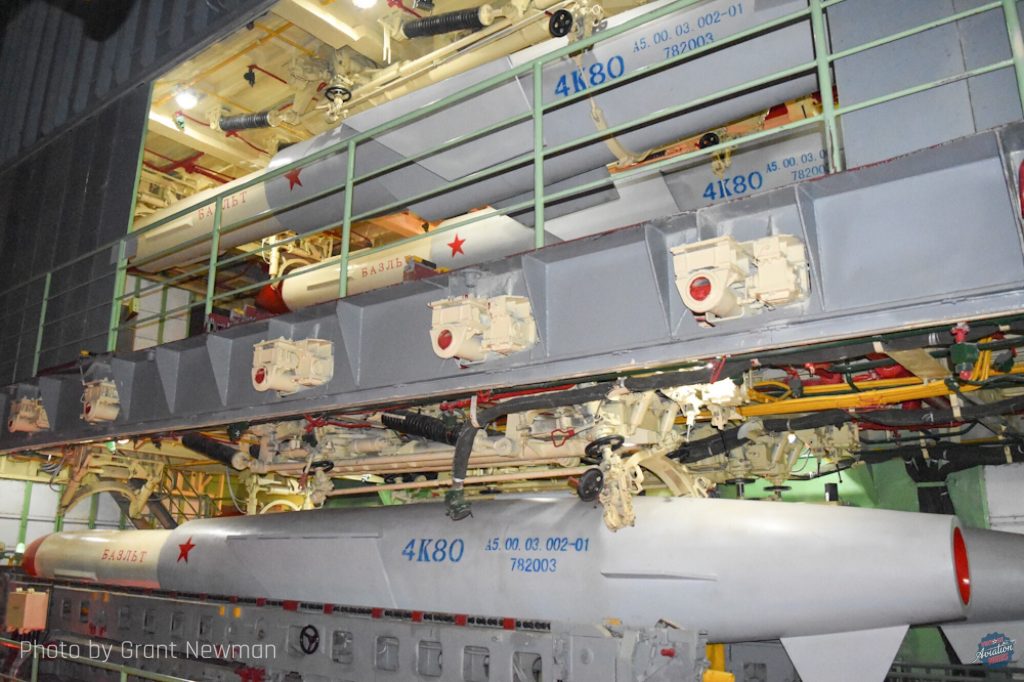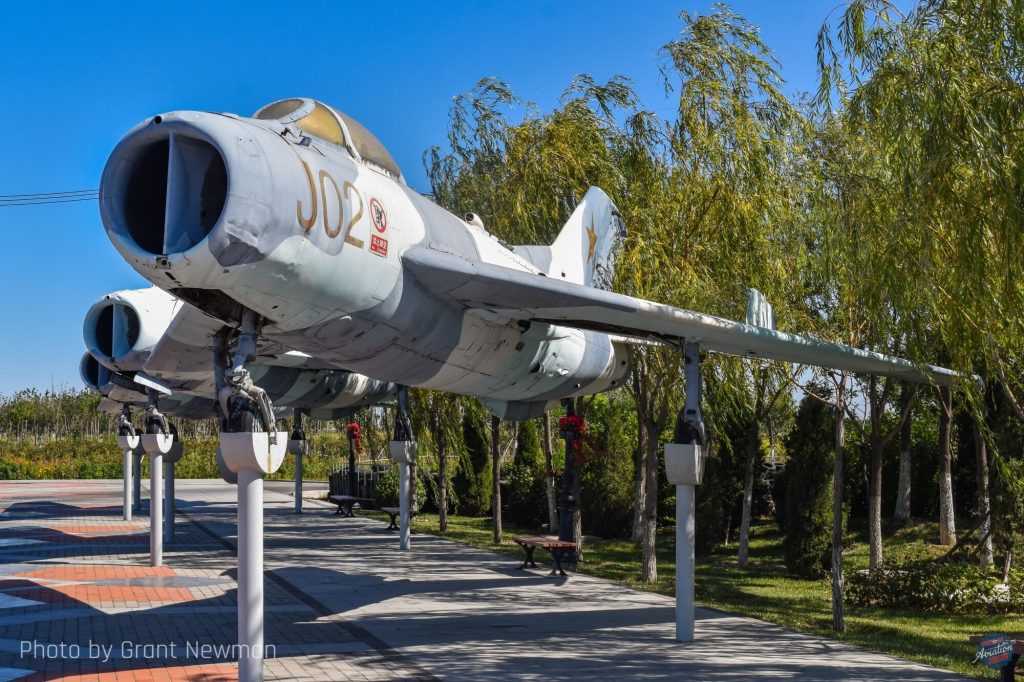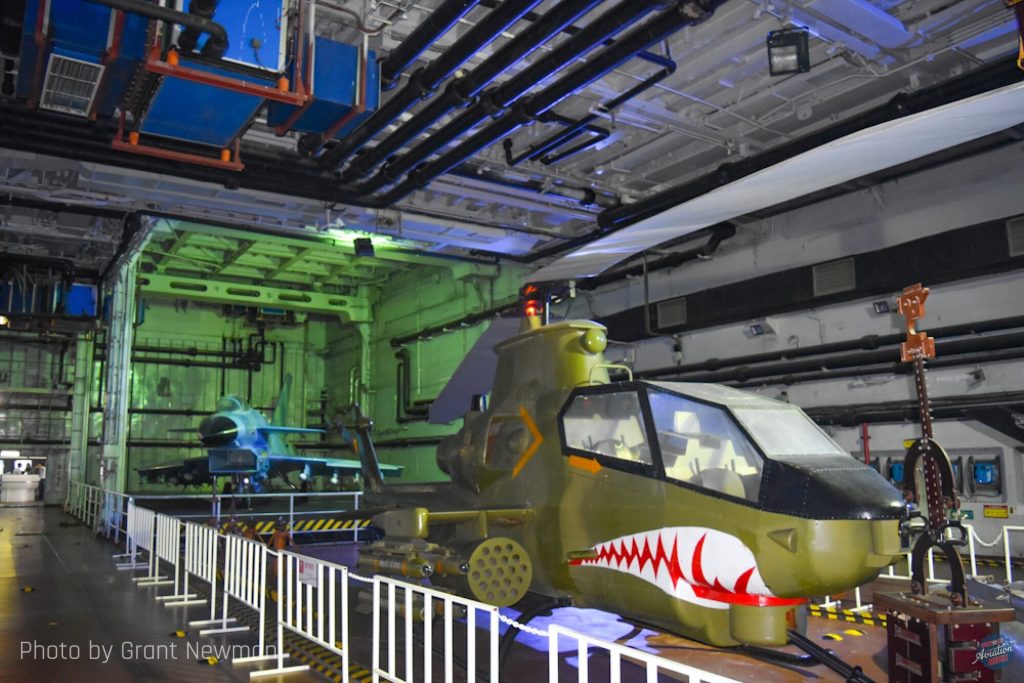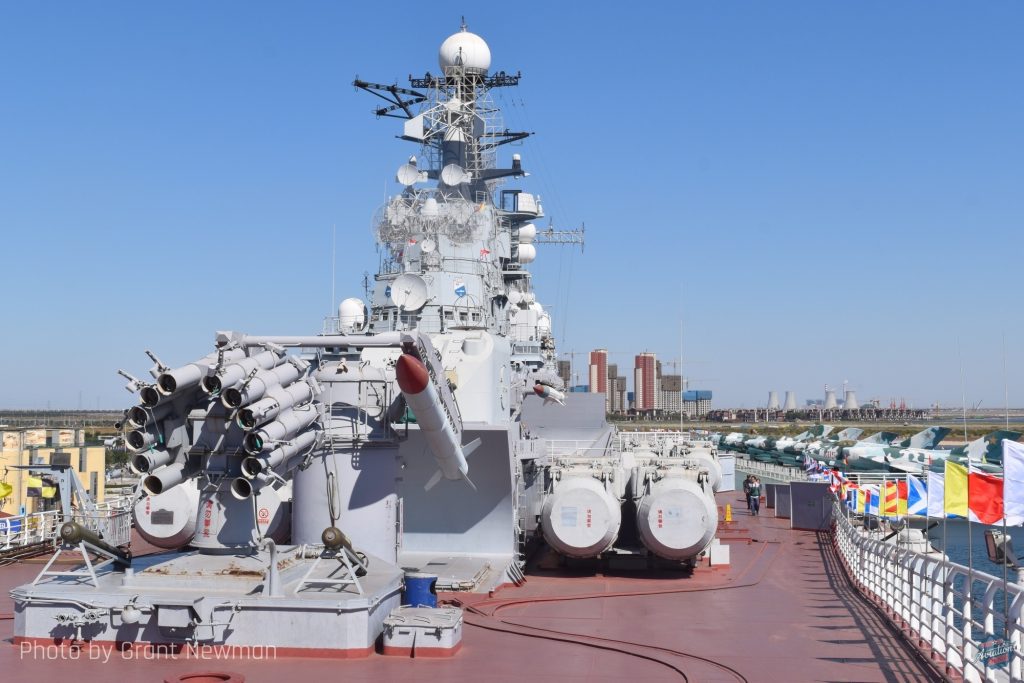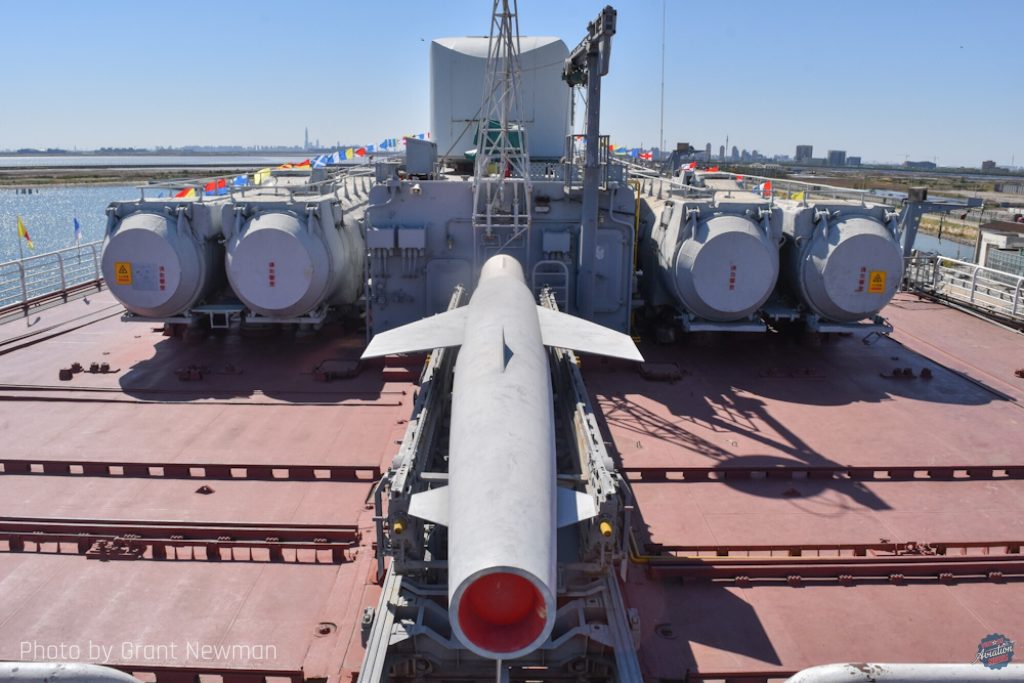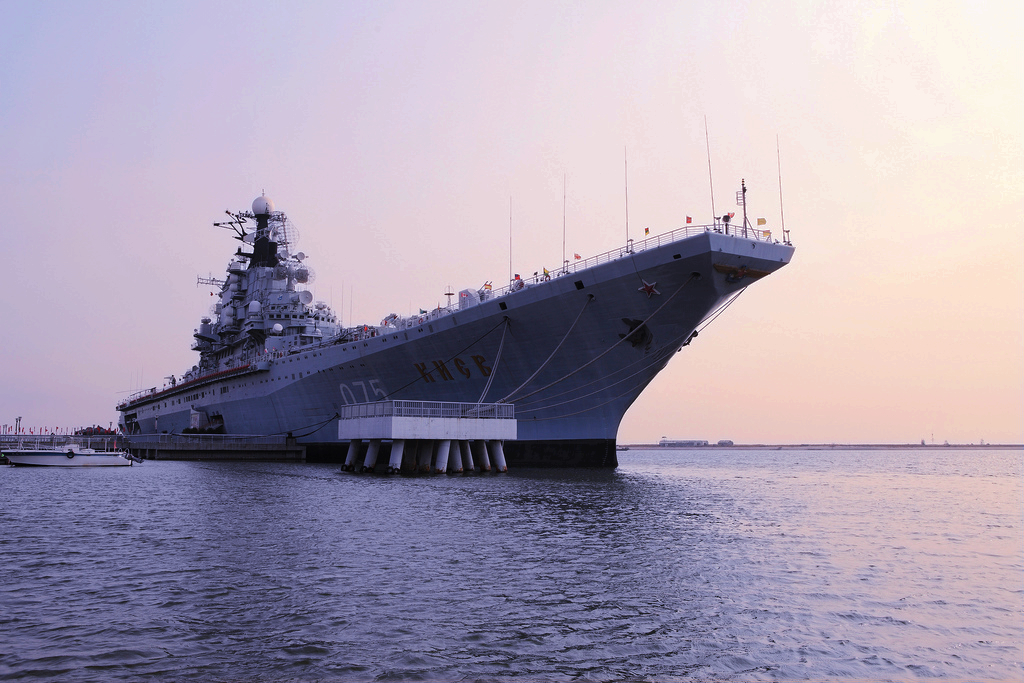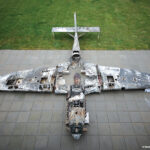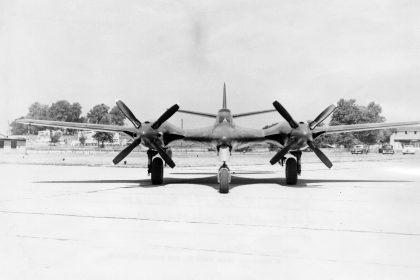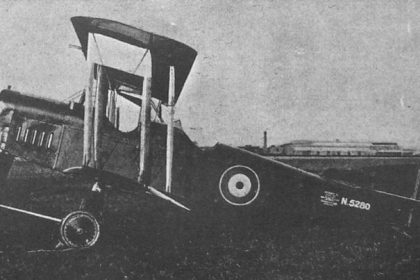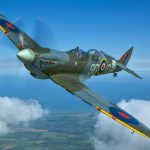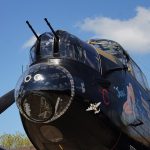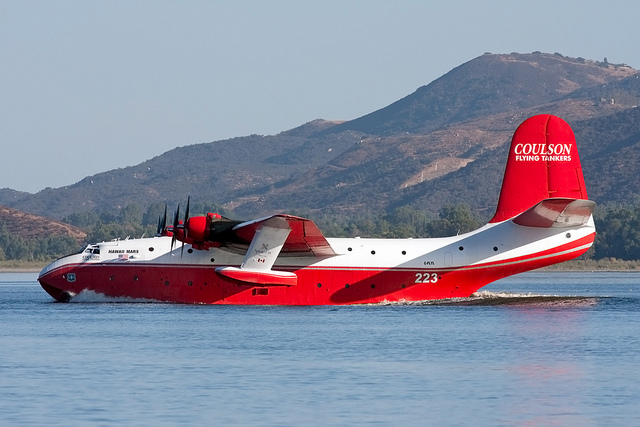In all my years traveling the globe to see aircraft, warships, tanks, and other military relics scattered in curious places, nothing has come close to the surreal experience I had in the People’s Republic of China. Just a half-hour’s drive from the Binhai New Area in Tianjin’s Economic-Technological Development Area (TEDA), lies what is undoubtedly the weirdest site I’ve ever encountered: the Binhai Aircraft Carrier Theme Park—hereafter referred to as BACTP. As the name implies, the park is built around a real aircraft carrier: the former Soviet Navy flagship, the Kiev.
Back in the 1970s, the Kiev and her sister ships caused alarm in Western defense circles. Under Admiral Sergey Gorshkov, the Soviet Navy rapidly expanded its capabilities, introducing the so-called “heavy aviation cruisers”—hybrids between aircraft carriers and missile cruisers. Outfitted with Yakovlev Yak-38 VTOL jets and Kamov Ka-25 ASW helicopters, the Kiev-class ships patrolled the Mediterranean and Atlantic, representing the USSR’s first serious foray into blue-water naval aviation. As a military-obsessed child growing up in the West, I devoured grainy images of these mysterious vessels in an aging copy of The Soviet War Machine. At the time, I never imagined I’d one day stand on the deck of one—yet here I was, about to walk aboard the original Kiev, a ship that had once been the pride of the Soviet fleet.
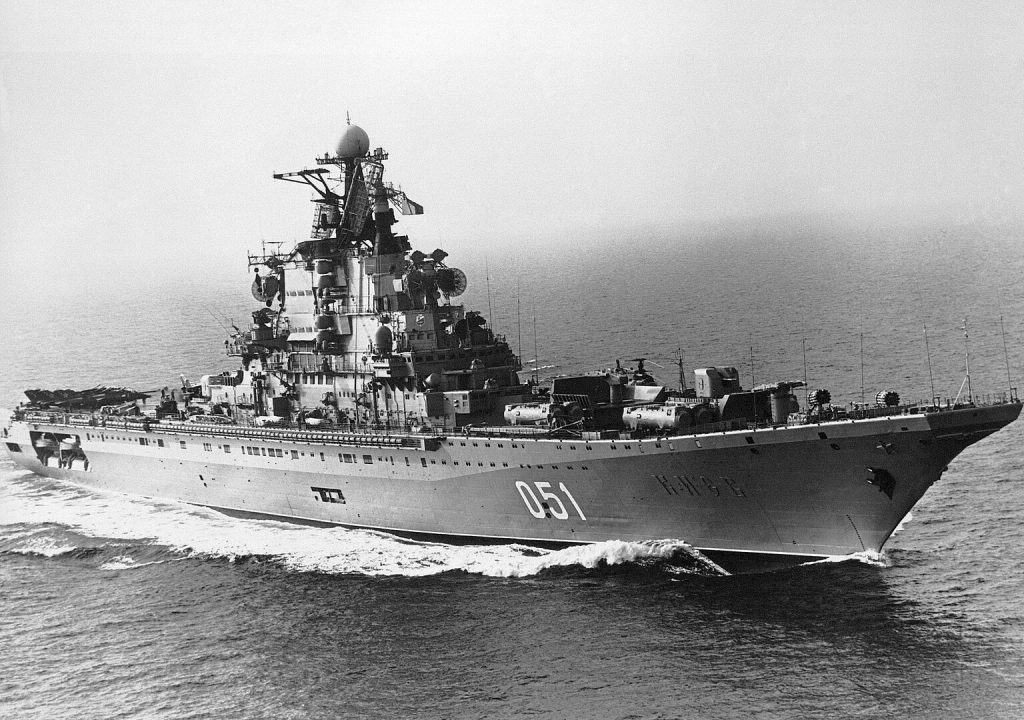
The “Theme Park”
First off, the “Theme Park” bit. In 1993 the Kiev was retired from active service in the new Russian Navy and was unceremoniously left to rot, until a few years later when bought by Chinese tourism consultant firm Leisure Quest International, and towed to China with the intent of converting the ship into an international hotel and creating a theme park around it. The Minsk was similarly disposed of, or at least so we in the West were led to believe. The theme park bit was a smoke screen, as the two Soviet sisters, the hulk of the former Royal Australian Navy’s Majestic Class light aircraft carrier HMAS Melbourne and a third former Soviet aircraft carrier the Varyag, docked in Ukraine at the time, were all bought by Chinese businesses to enable the ships to be studied for the development of aircraft carriers to serve the People’s Liberation Army Navy (PLAN). This resulted in the Varyag undergoing a complete reconstruction as the PLAN’s first aircraft carrier, named the Liaoning, which is still in service as a training vessel. Disposal of the other three ships saw the Melbourne scrapped, while the promise of lucrative tourist ventures resulted in the Kiev and Minsk being sold to investors. Refurbishment as hotels proved costly and ultimately unfeasible and to this day, aboard the Kiev, only a small number of suites have been created and it has yet to open for business. Instead, to justify the large hulk’s existence, a kitschy Russia-oriented wonderland was designed around it, complete with avenues of shops selling Russian goods, occupied by attractive young women imported especially from Ukraine as stallholders and shopkeepers. There’s also a live-action pyrotechnics show, featuring actors on jet-skis held in the pool off the bow of the ship!.
War Machines in Disrepair
Like many large-scale attractions in China, BACTP features an eclectic collection of military hardware: tanks, armored vehicles, artillery pieces, and a scattering of Shenyang J-6 fighters (Chinese-built MiG-19s), painted in fake Soviet markings. They sit on plinths, arranged like garden statues or park benches—many in poor condition. There are also several decommissioned warships and a submarine moored in a basin surrounding the Kiev. Admission is steep, but visitors receive a passport-style booklet featuring a deck plan of the Kiev, with spaces for stamps corresponding to each ship visited. Mine was stamped only once—more on that later.
Aboard the Kiev
Entry to the Kiev begins at the torpedo room, which houses twin banks of five launch tubes on either side. Visitors then follow a guided path through missile magazines, control rooms, and mess areas—many populated by eerily lifelike mannequins in Soviet naval uniforms. There’s a scale model display of unrelated aircraft, and a walk through the cavernous hangar deck. Unfortunately, in its conversion to a tourist-friendly environment, much of the Kiev’s interior has lost its identity. Sanitized corridors and generic rooms have replaced the gritty charm of a working warship. The result is more theme park than historical museum—the soul of the ship feels stripped away.
But step out onto the flight deck, and the Kiev starts to reclaim some of its former grandeur. Its massive superstructure, bristling with radar arrays and antennae, looms overhead. Painted aircraft parking spots still line the deck, and a few weathered Nanchang Q-5s and a lone Yak-38 replica have been staged for effect. The forward deck still features the menacing armament that once terrified NATO analysts: cruise missile launchers the size of small aircraft, surface-to-air missile batteries, and rocket pods.
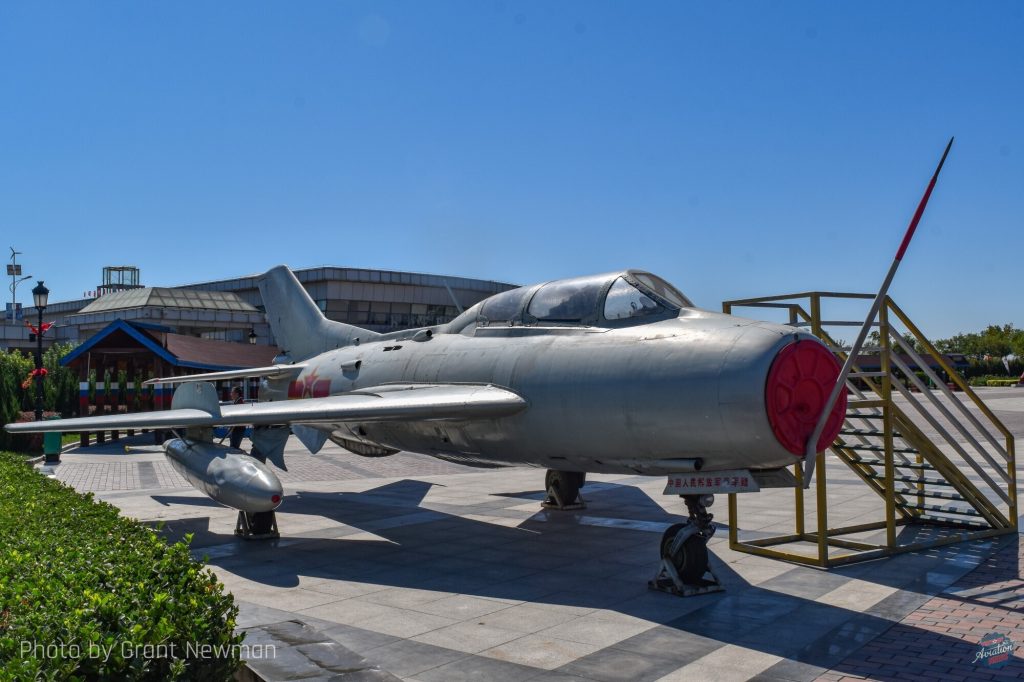
Within the superstructure, the flight deck control and bridge remain largely intact. While sparse in equipment, these areas offer a glimpse into the operational past of the ship. Unlike the tourist-ready corridors below decks, these spaces still evoke a sense of authenticity and command.
Restricted Access
After exploring the Kiev for nearly two hours, I tried to visit the adjacent submarine and destroyer—but was stopped by military guards. Despite being on display in what is ostensibly a public theme park, foreigners are not permitted to board these vessels due to “secrets,” as one guard explained via my translation app. Curiously, I was still allowed to photograph the ships’ exteriors—though always under watchful eyes.
Back at my hotel, I dug into the background of these vessels. The submarine is a Type 035 Ming-class attack sub, a heavily modified version of the older Type 033 Romeo-class, itself a Chinese-built copy of the Soviet Project 633 design. The destroyer is the Chongqing, a Type 051 Luda-class guided missile destroyer, based on the Soviet Neustrashimy class. Surprisingly, both ships were reportedly still active in some capacity, which may explain the restricted access.
A Surreal Experience
Ultimately, my visit to BACTP was as fascinating as it was bizarre. The opportunity to wander the deck of the Kiev, a ship that once embodied Soviet naval might, was unforgettable—albeit filtered through a surreal lens of commercial spectacle and political opacity. While its interior may be sanitized and its purpose diluted, the Kiev remains a tangible piece of Cold War history, floating quietly in a theme park unlike any other in the world.







